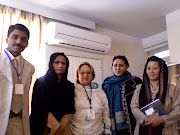We went through a phase transition a few years back, when the conversational zeitgeist moved from "is climate change really happening?" to "what do we do about climate change?" In the same way, the challenge is shifting from "is GDP good enough?" to how to implement broader measures of progress in our economies and political systems. This suggests questions like: Who are the early adopters? How will particular measures advance different social goals? What are the simplest useful advances to make?
In the edited highlights below, Stiglitz, Sen, and their companions weigh in with their perspectives and recommendations.
Key Messages
The seemingly bright growth performance of the world economy between 2004 and 2007 may have been achieved at the expense of future growth. It is also clear that some of the performance was a “mirage”, profits that were based on prices that had been inflated by a bubble.
The whole Commission is convinced that the crisis is teaching us a very important lesson: those attempting to guide the economy and our societies are like pilots trying to steering a course without a reliable compass. The decisions they (and we as individual citizens) make depend on what we measure, how good our measurements are and how well our measures are understood. We are almost blind when the metrics on which action is based are ill-designed or when they are not well understood. For many purposes, we need better metrics. Fortunately, research in recent years has enabled us to improve our metrics, and it is time to incorporate in our measurement systems some of these advances.
The first main message of our report is that the time has come to adapt our system of measurement of economic activity. There are now many products whose quality is complex, multi-dimensional and subject to rapid change. This is obvious for goods, like cars, computers, washing machines and the like, but is even truer for services, such as medical services, educational services, information and communication technologies, research activities and financial services. Capturing quality change is a tremendous challenge, yet this is vital to measuring real income and real consumption, some of the key determinants of people’s material well-being.
Another key message, and unifying theme of the report, is that the time is ripe for our measurement system to shift emphasis from measuring economic production to measuring people’s well-being. Changing emphasis does not mean dismissing GDP and production measures. They emerged from concerns about market production and employment; they continue to provide answers to many important questions such as monitoring economic activity. But emphasizing well-being is important because there appears to be an increasing gap between the information contained in aggregate GDP data and what counts for common people’s well-being.
To define what well-being means, a multidimensional definition has to be used. Based on academic research and a number of concrete initiatives developed around the world, the Commission has identified the following key dimensions that should be taken into account. At least in principle, these dimensions should be considered simultaneously:
i. Material living standards (income, consumption and wealth);
ii. Health;
iii. Education;
iv. Personal activities including work
v. Political voice and governance;
vi. Social connections and relationships;
vii. Environment (present and future conditions);
viii. Insecurity, of an economic as well as a physical nature.
All these dimensions shape people’s well-being, and yet many of them are missed by conventional income measures.
Recommendations
Recommendation 1: When evaluating material well-being, look at income and consumption rather than production. As statisticians and economists know very well, GDP mainly measures market production – expressed in money units – and as such it is useful. However, it has often been treated as if it were a measure of economic well-being. Conflating the two can lead to misleading indications about how well-off people are and entail the wrong policy decisions.
Recommendation 2: Emphasize the household perspective. While it is informative to track the performance of economies as a whole, trends in citizens’ material living standards are better followed through measures of household income and consumption. Indeed, the available national accounts data shows that in a number of OECD countries real household income has grown quite differently from real GDP per capita, and typically at a lower rate.
Recommendation 3: Consider income and consumption jointly with wealth. A household that spends its wealth on consumption goods increases its current well-being but at the expense of its future well-being. The consequences of such behavior would be captured in a household’s balance sheet, and the same holds for other sectors of the economy, and for the economy as a whole. Measures of wealth are central to measuring sustainability. What is carried over into the future necessarily has to be expressed as stocks – of physical, natural, human and social capital. The right valuation of these stocks plays a crucial role, and is often problematic. There is also a need to “stress test” balance sheets with alternative valuations when market prices for assets are not available or are subject to bubbles and bursts. Some more direct non-monetary indicators may be preferable when the monetary valuation is very uncertain or difficult to derive.
Recommendation 4: Give more prominence to the distribution of income, consumption and wealth. Median consumption (income, wealth) provides a better measure of what is happening to the “typical” individual or household than average consumption (income, wealth). But for many purposes, it is also important to know what is happening at the bottom of the income/wealth distribution (captured in poverty statistics), or at the top.
Recommendation 5: Broaden income measures to non-market activities. Many of the services people received from other family members in the past are now purchased on the market. This shift translates into a rise in income as measured in the national accounts and may give a false impression of a change in living standards, while it merely reflects a shift from non-market to market provision of services. Once one starts focusing on non-market activities, the question of leisure arises. Consuming the same bundle of goods and services but working for 1500 hours a year instead of 2000 hours a year implies an increase in one’s standard of living.
Recommendation 6: Quality of life depends on people’s objective conditions and capabilities. Steps should be taken to improve measures of people’s health, education, personal activities and environmental conditions. In particular, substantial effort should be devoted to developing and implementing robust, reliable measures of social connections, political voice, and insecurity that can be shown to predict life satisfaction. What really matters are the capabilities of people, that is, the extent of their opportunity set and of their freedom to choose among this set, the life they value. While the precise list of the features affecting quality of life inevitably rests on value judgments, there is a consensus that quality of life depends on people’s health and education, their everyday activities (which include the right to a decent job and housing), their participation in the political process, the social and natural environment in which they live, and the factors shaping their personal and economic security.
Recommendation 7: Quality-of-life indicators in all the dimensions covered should assess inequalities in a comprehensive way. Inequalities in quality of life should be assessed across people, socio-economic groups, gender and generations.
Recommendation 8: Surveys should be designed to assess the links between various quality-of-life domains for each person, and this information should be used when designing policies in various fields. It is critical to address questions about how developments in one domain of quality of life affect other domains, and how developments in all the various fields are related to income. This is important because the consequences for quality of life of having multiple disadvantages far exceed the sum of their individual effects.
Recommendation 9: Statistical offices should provide the information needed to aggregate across quality-of-life dimensions, allowing the construction of different indexes. While assessing quality-of-life requires a plurality of indicators, there are strong demands to develop a single summary measure. Several summary measures of quality of life are possible, depending on the question addressed and the approach taken. Some of these measures are already being used, such as average levels of life-satisfaction for a country as a whole, or composite indices that aggregate averages across objective domains, such as the Human Development Index.
Recommendation 10: Measures of both objective and subjective well-being provide key information about people’s quality of life. Statistical offices should incorporate questions to capture people’s life evaluations, hedonic experiences and priorities in their own surveys. Quantitative measures of these subjective aspects hold the promise of delivering not just a good measure of quality of life per se, but also a better understanding of its determinants, reaching beyond people’s income and material conditions.
Recommendation 11: Sustainability assessment requires a well-identified dashboard of indicators. The distinctive feature of the components of this dashboard should be that they are interpretable as variations of some underlying “stocks”. The assessment of sustainability is complementary to the question of current well-being or economic performance, and must be examined separately.To take an analogy, when driving a car, a meter that added up in one single number the current speed of the vehicle and the remaining level of gasoline would not be of any help to the driver. Both pieces of information are critical and need to be displayed in distinct, clearly visible areas of the dashboard. At a minimum, in order to measure sustainability, what we need are indicators that inform us about the change in the quantities of the different factors that matter for future well-being.
Recommendation 12: The environmental aspects of sustainability deserve a separate follow-up based on a well-chosen set of physical indicators. In particular there is a need for a clear indicator of our proximity to dangerous levels of environmental damage (such as associated with climate change or the depletion of fishing stocks.) Placing a monetary value on the natural environment is often difficult and separate sets of physical indicators will be needed to monitor the state of the environment. This is in particular the case when it comes to irreversible and/or discontinuous alterations to the environment.
The Commission believes that a global debate around the issues and recommendations raised in this report provides an important venue for a discussion of societal values, for what we, as a society, care about, and whether we are really striving for what is important.












No comments:
Post a Comment